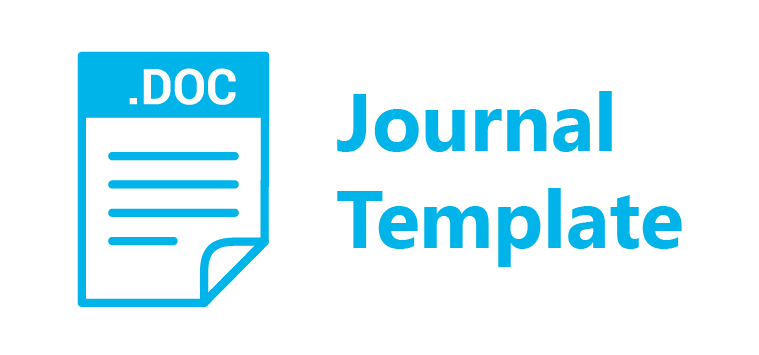On the Use of Steel and Aluminum Materials for Frame Structure of Electric Trike
DOI:
https://doi.org/10.35806/ijoced.v3i1.122Keywords:
E-trike, Design, Aluminum-based Frame, Numerical SimulationAbstract
This work investigated the pros and cons of aluminum material used for electric trike frame compared with steel material. With a compact design and small dimension, e-trike is suitable to be used in many relatively small road accesses. However, the compact design can cause the frame to receive high and concentrated stress. The aluminum-based frame had lower strength, but lighter weight compared to the steel-based frame. In this study, the stress evaluation for both aluminum-based and steel-based frames is done using the finite element method. The minimum thickness of the aluminum-based frame was iterated to match the strength of the steel-based frame. The results showed that the aluminum-based frame has comparable performance to the steel-based frame but with lighter weight. However, the production cost of the aluminum-based frame might be a challenging issue to be solved.
References
Arifurrahman, F., Budiman, B. A., & Aziz, M. (2018). On the Lightweight Structural Design for Electric Road and Railway Vehicles using Fiber Reinforced Polymer Composites–A Review. Int. J. Sustain. Transp. Technol., 1(1), 21-29.
Arifurrahman, F., Budiman, B. A., & Santosa, S. P. (2018). Static Analysis of an Electric Three-Wheel Vehicle. Paper presented at the 2018 5th International Conference on Electric Vehicular Technology (ICEVT).
Arifurrahman, F., Indrawanto, I., Budiman, B. A., Sambegoro, P. L., & Santosa, S. P. (2018). Frame modal analysis for an electric three-wheel vehicle. Paper presented at the MATEC Web of Conferences.
Aziz, M., & Budiman, B. A. (2017). Extended utilization of electric vehicles in electrical grid services. Paper presented at the 2017 4th International Conference on Electric Vehicular Technology (ICEVT).
Aziz, M., Huda, M., Budiman, B. A., Sutanto, E., & Sambegoro, P. L. (2018). Implementation of Electric Vehicle and Grid Integration. Paper presented at the 2018 5th International Conference on Electric Vehicular Technology (ICEVT).
Budiman, B. A. (2020). Indonesia Patent No.: I. T. Bandung.
Cheah, L. W. (2010). Cars on a diet: the material and energy impacts of passenger vehicle weight reduction in the US. Massachusetts Institute of Technology.
Grabowski, A. G., & Jaura, A. K. (2001). Ford's PRODIGY hybrid electric vehicle powertrain weight reduction actions: SAE Technical Paper.
Halimah, P. N., Rahardian, S., & Budiman, B. A. (2019). Battery Cells for Electric Vehicles. International Journal of Sustainable Transportation, 2(2), 54-57.
Hart, R. T., Hennebel, V. V., Thongpreda, N., Van Buskirk, W. C., & Anderson, R. C. (1992). Modeling the biomechanics of the mandible: a three-dimensional finite element study. Journal of biomechanics, 25(3), 261-286.
Irons, B. M., & Razzaque, A. (1972). Experience with the patch test for convergence of finite elements The mathematical foundations of the finite element method with applications to partial differential equations (pp. 557-587): Elsevier.
Joost, W. J. (2012). Reducing vehicle weight and improving US energy efficiency using integrated computational materials engineering. Jom, 64(9), 1032-1038.
Jusuf, A., Nurprasetio, I. P., & Prihutama, A. (2017). Macro data analysis of traffic accidents in Indonesia. Journal of Engineering and Technological Sciences, 49(1), 132-143.
Kelly, J. C., Sullivan, J. L., Burnham, A., & Elgowainy, A. (2015). Impacts of vehicle weight reduction via material substitution on life-cycle greenhouse gas emissions. Environmental science & technology, 49(20), 12535-12542.
Kusuma, C. F., Budiman, B. A., & Nurprasetio, I. P. (2019). Simulation Method for Extended-Range Electric Vehicle Battery State of Charge and Energy Consumption Simulation based on Driving Cycle. Paper presented at the 2019 6th International Conference on Electric Vehicular Technology (ICEVT).
McGregor, I. (2010). Impact performance of aluminium structures. Paper presented at the Structural Crashworthiness and Failure: Proceedings of the Third International Symposium on Structural Crashworthiness held at the University of Liverpool, England, 14–16 April 1993.
Miller, W., Zhuang, L., Bottema, J., Wittebrood, A. J., De Smet, P., Haszler, A., & Vieregge, A. (2000). Recent development in aluminum alloys for the automotive industry. Materials Science and Engineering: A, 280(1), 37-49.
Nurprasetio, I. P., Budiman, B. A., & Triawan, F. (2017). Failure investigation of plastic shredding machine's flange coupling based on mechanical analysis. Indonesian Journal of Science and Technology, 2(2), 124-133.
Ridwan, M. (2020). DKI Jakarta Harapkan Pemerintah Perjelas Peta Jalan Peningkatan Kualitas BBM Retrieved 10 August 2020, 2020, from https://ekonomi.bisnis.com/read/20200615/44/1252795/dki-jakarta-harapkan-pemerintah-perjelas-peta-jalan-peningkatan-kualitas-bbm-
Saito, M., Iwatsuki, S., Yasunaga, K., & Andoh, K. (2000). Development of aluminum body for the most fuel efficient vehicle. JSAE review, 21(4), 511-516.
Seyfried, P., Taiss, E. J. M., Calijorne, A. C., Li, F.-P., & Song, Q.-F. (2015). Light weighting opportunities and material choice for commercial vehicle frame structures from a design point of view. Advances in Manufacturing, 3(1), 19-26.
Sholahuddin, U., Purwadi, A., & Haroen, Y. (2016). Design procedure for a 5 KW mini electric vehicle drivetrains. Paper presented at the 2016 3rd Conference on Power Engineering and Renewable Energy (ICPERE).
Triawan, F., Budiman, B., Juangsa, F., Prananto, L., & Aziz, M. (2018). Finite element analysis on the unloading elastic modulus of aluminum foams by unit-cell model. Paper presented at the IOP Conference Series: Materials Science and Engineering.


















